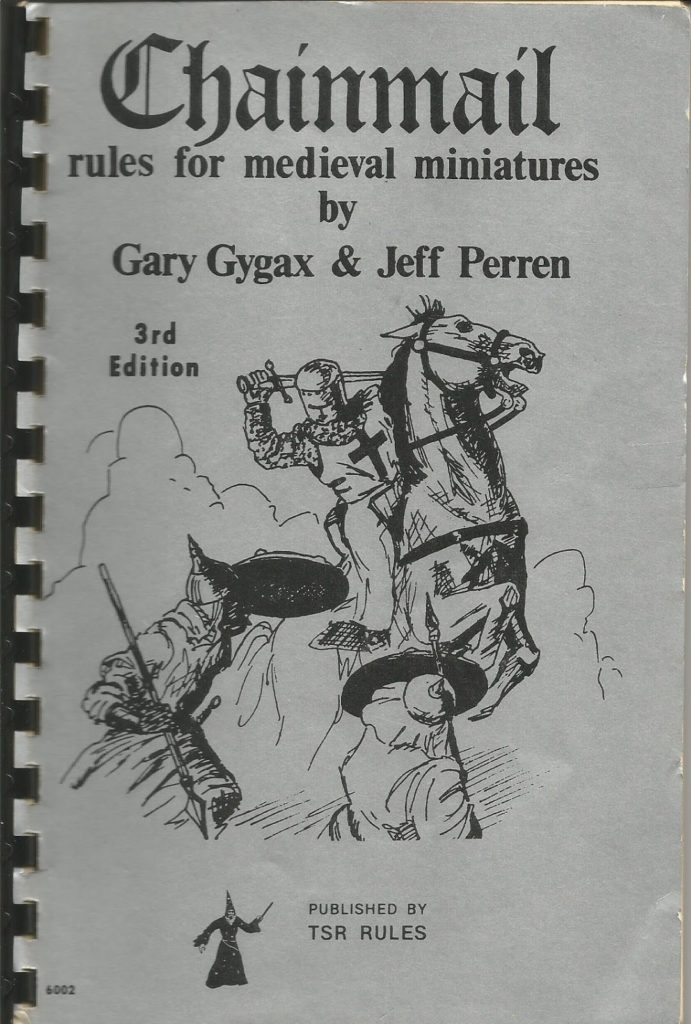I started to feel that I didn’t know roleplaying games well enough so I came up with the plan to read a roleplaying game corebook for every year they have been published. Selection criteria is whatever I find interesting.

There’s only one real starting point for a project like this, the original Chainmail miniatures strategy game from 1971. It’s not a roleplaying game at all but as a precursor for what came later its value is undeniable.
Designed by Gary Gygax and Jeff Perrin, Chainmail is a collector’s item nowadays. Embarrassingly, I had to start my project by cheating as I couldn’t find a PDF of the 1971 original. Instead, I read the 1975 third edition of Chainmail. From what I understand, it’s otherwise the same as the original except for a wider selection of spells.
Chainmail is a 48 page booklet of dense rules text. Despite this, it was surprisingly easy to read even for someone like me, with no familiarity with wargames. The simulation of medieval military conflict is the main subject of the game, with rules for engagements between units as well as exotic stuff like sieges and tournaments.
In hindsight, an important element of the booklet is the Fantasy Supplement, an appendix with extra rules for fantastic elements like magic on the battlefield. Chromatic dragons which later became a mainstay of Dungeons & Dragons are already present.
Still, Chainmail’s focus is on historical warfare. The foreword expresses the hope that the game would inspire an interest in studying history in the players. Some historical features, such as Landsknecht-soldiers seem to loom at least as large in the imagination of the authors as fantasy elements do.